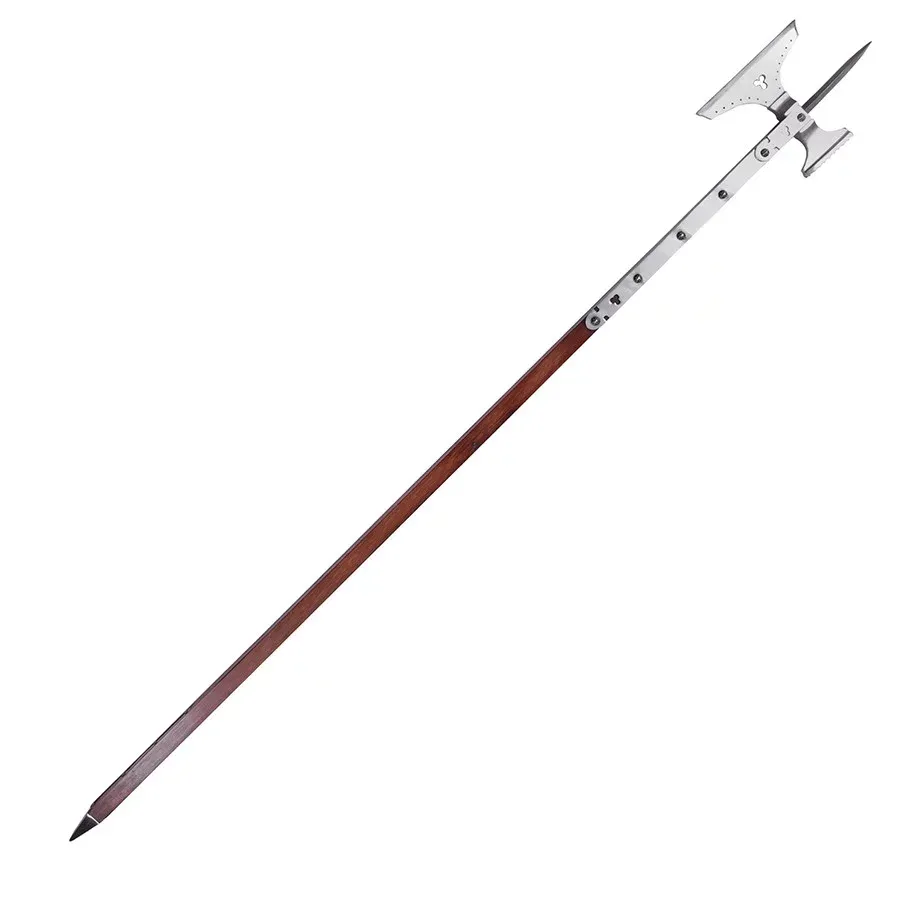Spears vs. Halberds
During the Middle Ages, spears and halberds rose as prominent weapons in warfare. Although they may seem similar as both are pole weapons, they exhibit considerable differences in both design and application in combat. This article delves into these two legendary weapons, unraveling their characteristics, historical developments, and their utility on the battlefield.
Origins and Evolution
Spears
- Origins: With a history that dates back to ancient times, spears were extensively used by civilizations such as the Greek and Roman. They were particularly notable in the formation of the hoplite phalanx, where soldiers protected themselves with large shields and carried long spears.
- Design: Medieval spears typically ranged from 1.8 to 2.4 meters in length, featuring a metal triangular tip. Some designs included elements like wings at the base of the tip, which helped prevent excessive penetration and facilitated recovery during combat.
Halberds
- Origins: They emerged in Europe around the year 1300, influenced by German and Scandinavian military techniques. The halberd became particularly famous in the hands of Swiss mercenaries, who maximized its capabilities in combat.
- Design: A pole weapon approximately two meters long, combining a spear tip at the top with a crossblade similar to an axe, and another piercing element on the opposite side.

Functionality and Use in Combat
Spears
- Use: Versatile for both ranged and close combat. They could be thrown or wielded to deliver blunt strikes. The "winged spear" was distinguished by its ability to prevent deep penetration due to its wings at the base, facilitating handling during combat.
- Advantages: Their manufacturing was relatively straightforward, requiring little training compared to other weapons. They were useful for both foot infantry and cavalry, allowing the wielder to use a shield simultaneously.
Halberds
- Use: The weapon of choice for close combat. Its multifunctional design allowed for both piercing the enemy and executing aggressive cross cuts.
- Advantages: Effective for taking down mounted enemies, offering the ability to hook and control other weapons, granting great versatility on the battlefield.

Fundamental Differences
- Length and Design: While spears were generally longer and suitable for throwing or ranged attacks, halberds had a more compact design, with offensive features like an additional cutting blade.
- Functionality: The spear excelled in both ranged engagement and close combat, while the halberd specialized in hand-to-hand fighting thanks to its ability to pierce and cut simultaneously.
- Historical Use: While spears have a legacy tied to tactics like the Greek phalanx or Roman infantry, halberds found their peak during the Middle Ages in Europe, gaining popularity among Swiss mercenaries.
Both weapons played essential roles in medieval military tactics. While the spear offered versatility and ease of handling, the halberd provided a powerful impact in close encounters. Today, these weapons are not only subjects of historical study but also representative of the tactical complexity and evolution of military strategies over the centuries.
















